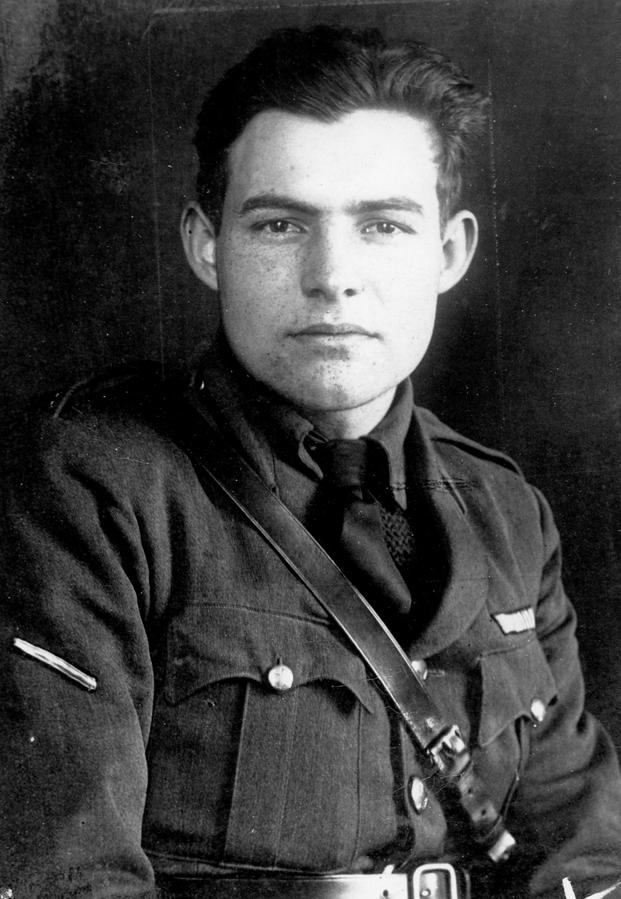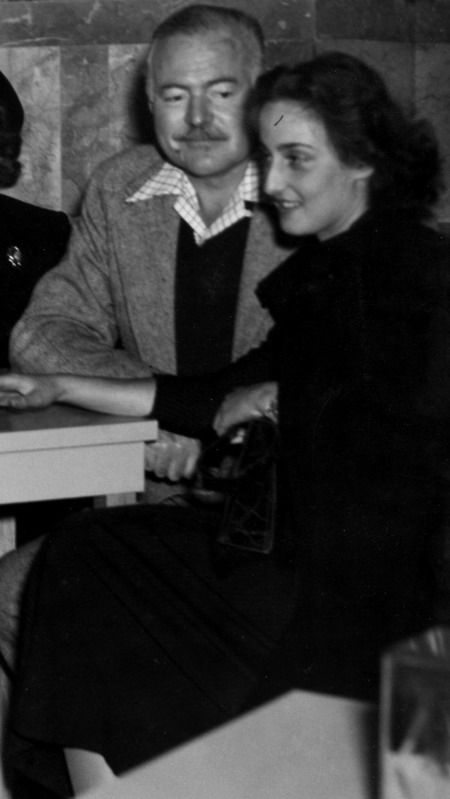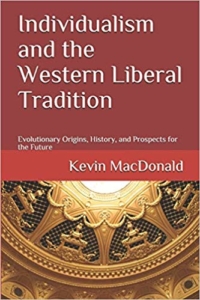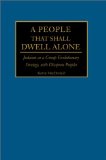Magnus Hirschfeld’s Racism (1934)
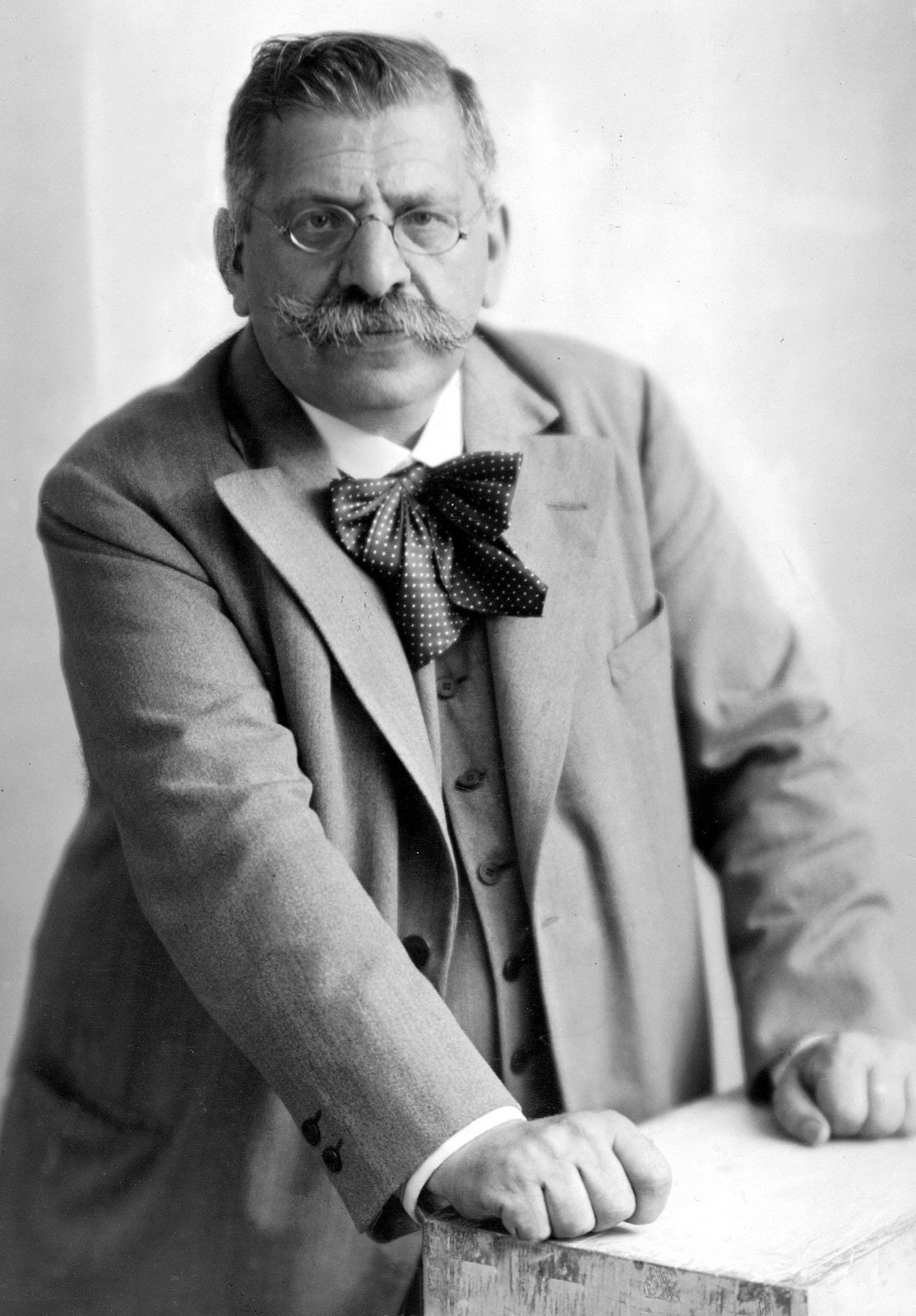 Back in May, the Scientific American published an article on “The Forgotten History of the World’s First Trans Clinic.” Having written an essay on Jewish ‘sexology’ in 2015, it came as no surprise that the Scientific American opened the piece by celebrating the fact this clinic, Institut füer Sexualwissenschaft (the Institute for Sexual Research), “was headed by a gay Jewish man” — Magnus Hirschfeld (1868–1935). Hirschfeld was probably the most influential pervert of the twentieth century, and his legacy is so extensive in the present that I would go so far as to suggest that we are truly living in an age of his design. Our contemporary culture is molded and shaped by the homosexuality, promiscuity, transsexuality, and transvestism that this subversive degenerate devoted his entire life to promoting. If he were alive today, one imagines that Hirschfeld would be overjoyed and profoundly delighted; filled with glee at the sight of drag queen story hours and transsexuals running for state governor. We truly live in a pervert’s paradise.
Back in May, the Scientific American published an article on “The Forgotten History of the World’s First Trans Clinic.” Having written an essay on Jewish ‘sexology’ in 2015, it came as no surprise that the Scientific American opened the piece by celebrating the fact this clinic, Institut füer Sexualwissenschaft (the Institute for Sexual Research), “was headed by a gay Jewish man” — Magnus Hirschfeld (1868–1935). Hirschfeld was probably the most influential pervert of the twentieth century, and his legacy is so extensive in the present that I would go so far as to suggest that we are truly living in an age of his design. Our contemporary culture is molded and shaped by the homosexuality, promiscuity, transsexuality, and transvestism that this subversive degenerate devoted his entire life to promoting. If he were alive today, one imagines that Hirschfeld would be overjoyed and profoundly delighted; filled with glee at the sight of drag queen story hours and transsexuals running for state governor. We truly live in a pervert’s paradise.
So overwhelming is Hirschfeld’s legacy in the sexual sphere, however, that it is often overlooked that this Jewish medical charlatan was also a vocal and innovative “anti-racist.” This fact had escaped my attention until a reader contacted me several years ago requesting that I review Hirschfeld’s 1934 book Rassismus (Racism). Unfortunately, I couldn’t find an English translation of the text at that time, and so I had to decline the request. Then, last month, I was directed by a friend to a 1938 translation that had been produced by two English communists, and was now available online at archive.org. What follows is a review of this book and a contextualization of its contents within Hirschfeld’s activism, thought, and politics.
Hirschfeld’s Culture War
Hirschfeld came from a family of Jewish merchants, and Elena Macini writes that Hirschfeld’s Jewishness was “a socially and politically determinant aspect of his life.”[1] Like many other founders of Jewish intellectual movements, Hirschfeld promoted social, cultural, and political universalism, and advanced theories of social and sexual behavior amounting to “the existence of fundamental irreducible sameness in human beings.”[2] A common feature of his work was the hatred he had for Christianity, and his criticisms resembled in many respects those concocted by Freud and the Frankfurt School. To Hirschfeld, Christianity was “essentially sadomasochistic, delighting in the pain of ascetic self-denial.”[3] Western Civilization had thus been “in the grip of anti-hedonist exaggerations for two thousand years,” thereby committing “psychic self-mutilation.”[4] Sickness and degeneracy were therefore to be associated with Western society, rather than Jews, homosexuals and other outsiders, and Hirschfeld’s prescribed cure was sexual hedonism and the acceptance of a proliferation of “identities” and “sexualities.” Although coming from a close-knit, observant, Jewish community, and possessed of an abiding hatred for Christianity, Hirschfeld superficially advocated a “pan-humanistic” outlook and was fond of declaring himself “a world citizen.”
Hirschfeld engaged in a direct form of political and social activism in the fight to break down Western social and sexual mores. He was a “socialist and an active member of the Social Democratic Party.”[5] Hirschfeld, described by Mancini as “cosmopolitan to the core,” essentially created the first homosexual “communities,” beginning in Berlin where he would parade in women’s clothing and was known as “Aunt Magnesia” by the city’s homosexuals. Hirschfeld organized homosexuals, encouraging them to openly flaunt their predilections and get involved in the growing campaign for “emancipation” that was developing under the auspices of the Scientific Humanitarian Committee which he had formed in 1897. Hirschfeld pioneered modern Social Justice Warrior tactics by urging celebrities and high-profile politicians to add their names in support of the campaign for “sexual equality.” Hirschfeld and his protégés produced a vast number of books, manuscripts, papers, and pamphlets concerning sexuality, transvestitism, and “transgenderism” (the latter two terms were Hirschfeld neologisms). Through his work with the Scientific Humanitarian Committee, Hirschfeld published the 23-volume Yearbook for the Sexual Intermediates, the first periodical devoted to “homosexual studies.” Hirschfeld’s Institute for Sexual Science was the world’s first gender identity clinic and his staff performed the first known transsexual surgeries.
Despite the labels attached to his committees and journals, Hirschfeld’s work rested largely on political argument rather than legitimate scientific investigation. Edward Dickson argues that Hirschfeld’s field was “characterized by unresolved and often speculative arguments.”[6] Whereas many of the early non-Jewish sexologists had a background in zoology and the sexual behavior of animals, particularly primates, Hirschfeld rejected such strictly biological or evolutionary interpretations of human sexual behavior. Following from this, the methodology he employed was extremely close to that employed by Freud — sexology was conceptualized as a “science” of patient interviews and circular reasoning rather than statistics and empirical observation. The same ‘methodologies’ will be apparent in his discussions of race.
Despite the bankruptcy of his science, the dramatic success of the Scientific Humanitarian Committee at mobilizing large sectors of German and European society on behalf of homosexuals was due to Hirschfeld’s personality. Like many Jewish intellectual leaders, he was an aggressive and relentless agitator. Respecting few social codes, he was the darling of the Social Democrats and the reviled enemy of Weimar conservatives (Hitler referred to Hirschfeld as “the most dangerous Jew in Germany”). By the end of the 1920s Hirschfeld’s activism meant that Weimar Germany saw homosexuality less as a medical disorder and sign of degeneration than as a major cause célèbre.
Hirschfeld’s perverse bonanza came to an end on May 6, 1933 when Nationalist German student organizations and columns of the Hitler Youth attacked the Institute for Sexual Science. The Institute library was liquidated and its contents used in a book burning on May 10. The youths also printed and disseminated posters bearing Hirschfeld’s face complete with the caption: “Protector and Promoter of pathological sexual aberrations, also in his physical appearance probably the most disgusting of all Jewish monsters.” Hirschfeld himself had been on an international speaking tour since 1931. He lived in exile in France until he died of a heart attack in 1935, shortly after he wrote and published Racism.
“Sexual Type Conquers Racial Type”
Hirschfeld’s theories on race and sexuality are essentially linked by flighty invocations of love, human universality, and what Hirschfeld described as “Panhumanism.” At the most basic level of his sexual theory, Hirschfeld had “subverted the notion that romantic love should be orientated toward reproduction,” arguing instead for the acceptance of homosexual lifestyles and hedonistic, non-reproductive, sexual relations in general.[7] A key element of Hirschfeld’s theory was the deployment of “love as a primary weapon in his ethical and philosophical campaign for the liberation of same-sex relationships.”[8]
Love as a concept was altered and weaponized by Hirschfeld, who imbued it with transcendental and cosmic qualities in an effort to distance it as much as possible from biological, reproductive drives. Mancini writes that “the idea that love had the potential to not only lift the individual but to enrich the broader mission of humanity was articulated in Hirschfeld’s condemnation of theories of racial hygiene and his appeal to Panhumanism in order to extinguish the hatred among nations and races.”[9] Today we see this legacy everywhere, in the constant use of “love” slogans as a kind of incantation against the perceived twin evils of racism and homophobia.

Demonstrating ‘love’ now involves little more than adopting a flamboyant and performative passive attitude to the displacement of White people on their own soil, or to the endless demands made by increasingly strange and deviant sexual subcultures. The ‘loving’ people of postmodernity are, in their own mind at least, morally superior beings by basically leaving themselves open to anything except the self-assertion of White identity and normal sexuality, which are sins beyond redemption. Racism, homophobia, and transphobia, which together essentially boil down to the idea that Whites should be able to live normally and by themselves, are perceived today as beyond the sphere of this deified ‘love’ and are therefore representative of a kind of modern heresy.

Hirschfeld lies at the heart of this weaponized quasi-New Age nonsense—indeed, our new religion, and yet for all his bogus rhetoric he must have known on some level that ‘love’ featured significantly less in the lives of homosexuals than mental illness, pederasty, promiscuity, and disease. But it was the idea and “feeling” that mattered most in creating a homosexual movement (and later, “anti-racist” movement) and public support behind it. As strategy it corresponded perfectly with efforts to achieve “Jewish emancipation.” In this respect Richard Wagner put it most astutely and succinctly when he wrote that
when we strove for emancipation of the Jews, we were really more the champions of an abstract principle than of a concrete case: … Our zeal for equal civil rights for Jews was much more the consequence of a general idea than of any real sympathy; for, with all our speaking and writing for Jewish emancipation, we always felt instinctively repelled by any actual, operative contact with them.
One could easily substitute “homosexuals” or even BLM and “anti-racism” for “Jews” and achieve significant insight into the basic psychological processes at work in our culture today, with Hirschfeld’s “general idea” being a florid abstraction of love around which the fashion-following and easily duped may gravitate. Whether it’s gays, transsexuals, or dead Black criminals, Whites everywhere are much more inclined to comfort themselves with some feel-good, abstract, morally framed principles rather than walk the more socially uncomfortable path involving a confrontation with hard reality.
Racism
So much, then, for Hirschfeld’s corrupt vision. But what of his 1934 text? Hirschfeld’s Racism is a strange book that left very little lasting impression on me. As such, I must apologize to readers expecting an interesting review because what follows resembles something closer to a sift through garbage. At 320 pages of 20 chapters that follow no logical progression, Racism is about 200 pages too long, being a poorly organized mass of repetition. Hirschfeld doesn’t so much attempt to convince his readers as hypnotize them, repeating stock phrases and approaches when discussing even the most basic themes. In terms of style, and assuming he has been translated well, Hirschfeld writes in the same terse, sarcastic tone throughout, which is interesting at first and excruciating some hundred pages later. The book is above all a bitter invective. Hirschfeld hates the National Socialists, and especially the race scientist Hans Günther. Hitler, Rosenberg, and Günther are trotted out with monotonous regularity for repetitive and pithy straw-man treatment. Aside from these issues of style and approach, the book is made all the more tedious for its lack of any serious engagement with the concept of race. Instead, the tome is a 320-page promotion of a GloboHomo prototype, in the form of Hirschfeld’s “sexually diverse” Panhumanist Utopia—the Pervert’s Paradise. One is thankful to read the text in digital form, thus alleviating the urge to consign a physical copy to the flames.
The book opens with an introduction by the prolific English Communist translators Eden and Cedar Paul. The introduction is a panegyric to the then-deceased Jew, with the writers asking “Is it not fitting that Magnus should arise from the tomb with a work which is intended to dispel the poison gas of racism?” No sooner had I recovered from this interesting turn of phrase than I found the only truthful sentence in the introductory essay: “Certainly no one could have mistaken him for an Aryan or a Nordic.”
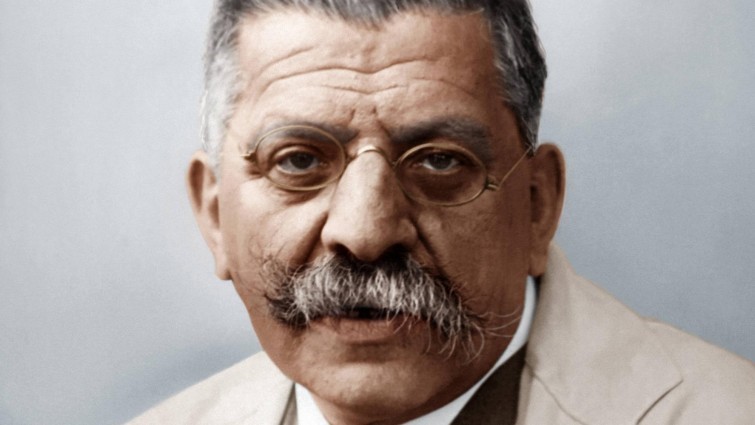
Truthful as it is, it’s a strange way to open a book intended to dispel the notion that there is any such thing as an Aryan or a Nordic. And yet, on such already shaking foundations, we move on to the thoughts of Aunt Magnesia himself.
In the book’s first chapter, “Origins of German Racism,” Hirschfeld offers nothing of the sort. Acting as if such figures as Bernhard Varen (1622–1650) and Johann Friedrich Blumenbach (1752–1840) never existed, Hirschfeld doesn’t give a full history of the development of racial thought in Germany but rather highlights a very small number of near-contemporary German race scholars whom he despises. Opening with the statement, “I trust that my readers will find me fair and unprejudiced,” Hirschfeld immediately outs himself as a Communist by castigating German race scholars for promoting “race war instead of class war.” Count Georges Vacher de Lapouge, whose thought isn’t even remotely touched upon, is declared a “prophet of the race war,” while Ludwig Woltmann is patronized as “recalling Parsifal the pure fool.” Also coming in for scathing insult without serious engagement are Hans Günther for his Rassenkunde des deutschen Volkes (Racial Categories of the German People), and Ludwig Ferdinand Clauss for his Rasse und Seele (Race and Soul).
The second chapter, “Arthur Gobineau and H.S. Chamberlain,” takes petty aim at two of the innovators in racial thinking as well as the Russian-born Joseph Deniker (son of French parents, and author of The Races and the Peoples of the Earth, 1900). It’s been a common tactic of Jewish activists over the last century or more to portray themselves as truly native while describing any co-operation among Europeans as being a kind of “foreign” threat. In this view, Jews are always the ultimate patriots while things like anti-Semitism or racism are a “foreign subversion” of native values. Hirschfeld falls immediately into the same well-worn trope, remarking “Strangely enough, Günther’s forerunners, the pioneers of modern racist theories, were not Germans but a Frenchman, an Englishman, and a Russian.” Petty and superficial, Hirschfeld doesn’t even pause to reflect on the meaninglessness of his criticism, ignoring the fact that, in the scheme of Hans Günther, the Anglo-Saxon Chamberlain and the Nordic Deniker were about as close to racial kin as one could find outside the immediate family and locality. In terms of criticism of the ideas of any of these scholars, Hirschfeld does little more than condemn them for attempting to divide humanity while attacking Gobineau in particular as a “misanthrope” and an “asexual.” This latter accusation I found interesting not only because it hints at Hirschfeld’s own preoccupations but also because it prefigures today’s accusation of “incel” directed at conservative males. In other words, one’s intellectual legitimacy is apparently tied to sexual activity—the logic of the sex-obsessed. In terms of any potential substance behind the claim, Gobineau does appear to have been childless (I may be wrong), but most accounts of his life seem to suggest Gobineau was possessed by fears that his Martinique-born wife may have had some distant Black ancestry. Gobineau, occupied by the science of racial lineages, would have been horrified less by sex than the prospect of mingling his genes with Africans.
The next two chapters concern “Race as a Concept” and “Aryans and Semites.” In the first of these we find a brief etymology of the word “race,” followed by a snide and unconvincing denunciation of Immanuel Kant’s 1775 lecture Von den verschiedenen Rassen der Menschen (On the Different Races of Man). Kant is condemned for advancing the idea that there is a “unified race of Whites,” with Hirschfeld remarking in Chapter 4 that the “White or Caucasian race is non-existent.” By way of argument, Hirschfeld merely invokes his fellow Jew Ludwig Gumplowicz, who “stressed in every way the immeasurably small role of biological heredity and the decisive role of the social environment in the determination of human behavior, while attaching a positive significance to the mixing of races.”
As well as resorting to ethnic nepotism in his habits of citation, Hirschfeld is prone to descending into fits of fantasy. In one of the most ludicrous, he claims that German Jews are descended for the most part from ancient Teutonic tribes, since “The German tribes of that part of the world were converted from Paganism to Judaism, as well as to Christianity, these conversions leading to or resulting from mixed marriages.” I have to hand it to Hirschfeld because I’ve spent over a decade reading endless reams of Jewish nonsense and I think this may be the boldest and most daring piece of bullshit ever to dribble from a Hebrew pen. Aunt Magnesia caps this stunning intellectual jab by declaring ethnology a “pseudo-science,” and insisting that “to speak of Aryans is fraud.” This then leads into an unexpected and diversionary condemnation of Hitler, whom Hirschfeld insists is a bad nationalist for renouncing his Austrian citizenship. One suspects that even had he lived to see the Anschluss, Hirschfeld would not have been honest enough to recant.
The hogwash valve is turned once more in Chapter 5, “Race and Genius,” which opens with the claim that Goethe was probably Jewish, and proceeds with the argument that “most persons of genius are of mixed type.” Those seeking any kind of reliance upon statistical data for such claims will be sorely disappointed. As with the case of his work on “sexualities,” Hirschfeld’s methodology is purely in the realm of anecdotes and speculative and unresolved arguments, and is supplemented by tales of personal interaction and observance that read like extremely poor fiction. Most confusing of Hirschfeld’s tactics is the fact he engages in outright denial of Günther’s racial categories for Whites while using the same categories to defend his ideas about the mixing of racial groups. Hirschfeld, for example, declares such groups as Ostics and Dinarics to be non-existent, and then later proceeds to argue that the mixing of racial groups is beneficial because Schopenhauer, Luther and Beethoven were a blend of Nordic and Ostic types. Making both arguments simultaneously in the same work is a clear instance of logical fallacy.
The next three chapters are some of the worst in the book, concerning mostly Africans and those of mixed race. In Chapter 6, “Is a human being’s worth dependent on the colour of his skin?,” Hirschfeld has nothing to say other than that skin tone is a matter of sun-bathing and that he once saw some very darkly tanned Swedes at a Mediterranean resort (I urge anyone thinking that I’m joking to consult the text). In Chapter 7, “Coloured Peoples,” Hirschfeld asserts that Black Africans are equal to Whites, and that pygmies are intelligent and peaceful (the IQ of African pygmies is in fact estimated at 53, which is in the category of mild mental retardation). In Chapter 8, “Half-Breeds,” Hirschfeld insists that “the alleged dangers of [racial] crossing are apocryphal.”
In fact, science clearly shows that, but for advances in medicine, many mixed-race children would not survive birth, and many non-White mothers would die in childbirth. Asian and Black females, for example, very often struggle to give birth naturally to offspring of a White father, due mainly to increased cranial size and birth weight. One 2012 study found that “Biracial status of parents was associated with higher risk for adverse pregnancy outcomes than both White parents.” A 2008 study by Stanford also found that “Pregnant women who are part of an Asian-white couple face an increased risk of gestational diabetes as compared with couples in which both partners are white. … The researchers say the findings suggest that the average Asian woman’s pelvis may be smaller than the average white woman’s and less able to accommodate babies of a certain size.” Moreover, mixed-race offspring are on average more socially dysfunctional, with those who call themselves biracial tending “to be more likely to smoke and drink, to have sex at younger ages, and to have poorer experiences at school such as through suspensions, skipping class and repeating grades.” Mixed race children are also “more likely than others to suffer from depression, substance abuse, sleep problems and various aches and pains.”
Hirschfeld, meanwhile, offers the opinion that “mixed breeds are beautiful,” and praises the German Jewish physicist Heinrich Hertz for suggesting Whites are globally outnumbered and could be exterminated in their African and East Asian colonial territories:
The White race makes up only a fraction of mankind, and its members are greatly outnumbered by the coloured races. … This ferment may lead ere long among the Yellows to a war of extermination against the Whites within their borders.
In terms of promoting the mixing of races, Hirschfeld also refers to the work of Dutch “anti-racist” anthropologist Herbert Moens, who castigated Whites for “false belief in our own superiority,” and predicted a “great race war of the 20th century.” Moens, the self-promoting anti-racist, was in fact a fraud (his credentials were faked), a pervert and a pedophile, who was eventually convicted in the United States in 1919 for taking obscene photographs of naked Black children under the guise of “anthropological research” while on a bogus “research tour” undertaken to prove that Whites had “as much Negro blood in them as coloured people.” Frauds, fellow Jews, perverts, and child abusers — such are the authorities relied upon by Magnus Hirschfeld in his quest to debunk racism.
In Chapter 9, “The Little Races,” the repetitive Hirschfeld returns again to Günther’s racial categories for Whites, offering nothing that he hasn’t already said in Chapters 4 and 5. In the chapter that follows, “Is a human being’s worth dependent on the shape of the bones?,” we find a mixture of maudlin appeals to sentimentality, a shameless promotion of the likely fraudulent cranial studies of fellow Jew Franz Boas, and the ludicrous anecdote-backed claim that the physical features normally ascribed to Nordic Aryan types are found more commonly among Jews than among Germans.[10] In Chapter 11, “The Blood Myth,” Hirschfeld engages in straw man tactics by pretending not to know that when early twentieth-century racialists spoke of ‘blood’ they meant the transmissible hereditary composition of the human being. Hirschfeld instead portrays racialists as mystical fantasists, and remarks “it is a futile dream to suppose that race can ever be ascertained by an examination of the blood.” Of course, this “futile dream” is today not only a reality in relation to blood, but race can also be accurately ascertained by an examination of every other bodily fluid, as well as hair, teeth, and bones.
In Chapters 12 and 13, Hirschfeld returns to a subject close to his heart—sexual perversion. Hirschfeld remarks that all races must be identical because sexual abnormalities occur with equal frequency in all ethnic groups, but provides no evidence for any such parity of frequency. (It was the claim of several historical anti-Jewish activists, and also of Hans Günther, that there was a particularly high frequency of homosexuality among Jews but this has never been empirically proven.) Hirschfeld then departs from the topic of race to rant about the equality of homosexuals, remarking that heterosexuals only “regard themselves as ‘normal’ because they are in the majority.” I leave readers to judge just how normal Magnus Hirschfeld was, leaving for their consideration only the facts that this man walked around in women’s clothing as Aunt Magnesia, and oversaw a fatal attempt to transplant a uterus into a Danish man.[11]
Above all, Hirschfeld asserts in these chapters that race has no biological basis but that sexuality does. Or, to put it another way, Hirschfeld argues that a homosexual is “born that way” and thus on some level determined by his biological make-up, but that a African man is not determined in any way by his genetic ancestry. As Hirschfeld says, “beyond question, the sexual type conquers the racial type.” Isn’t this the philosophy of the present day? Belief in race is derided and scorned while the homosexual and the transsexual are celebrated for their “Pride.” Meanwhile, in scientific terms, it is perfectly possible to determine the race of someone from their skin, fluids, and bones, while it remains utterly impossible to determine their sexual proclivities in the same manner. Which is the real pseudo-science here? The science of race and genes, or the ‘science’ of Hirschfeld’s “homosexual panhumanism”? We all know the answer, even if it is suffocated by cultural manipulation.
Hirschfeld’s true priorities lie in merging the populations of the world, either biologically or psychologically — the “Globo” that compliments and enables the “Homo.” He writes,
The individual, however close the ties of neighbourhood, companionship, family, a common lot, language, education, and the environment of nation and country, can find only one dependable unity with which to seek a permanent spiritual kinship — that of humanity-at-large, that of the whole human race.
Chapter 14, “Race in the Melting Pot of Mimicry,” is dedicated to the advancement of this idea of “oneness with humanity,” with Hirschfeld pointing to “the Unified Americans” as an example of how this can be accomplished. Reading this chapter, I wondered if Hirschfeld had ever actually been to the United States and seriously considered the history and lives of its citizens. On one level, it must be admitted, Americans are united — overwhelmingly by language, government, dress, pop culture, and other customs. But Americans are also strongly divided, as they always have been, on racial grounds. In fact, this is one of the defining features of the American trajectory when compared, for example, with European migrations to South America (although even racial considerations have at times been strong there). North Americans are not universally racially united. It is true there has been a mixing of European populations (the Celt with the Slav, the Nordic with the Mediterranean, etc.), and the inevitable mixing of some Europeans with non-European peoples, but for the most part, American history is the story of the White man carving out a new world for himself. And any mawkish suggestions during the Obama era that we might enter a kind of post-racial America of Hirschfeld’s imaginings, have evaporated dramatically in this age of Critical Race Theory and Black Lives Matter. Race is here, and it is here to stay.
Chapters 15 and 16 contain Hirschfeld’s thoughts on the Nature versus Nurture debate, which have already been uttered countless times already in the book and are unremarkable. In Chapter 17, “Are there ‘Elect’ Nations and Races?,” Hirschfeld launches himself into Freudian analysis of “racists”:
Racist dislikes … can only be elucidated by ‘depth-psychology’ for they are rooted in the unconscious. … The taproot of racial hatred is the self-assertive impulse which is so deeply planted in human nature.
Hirschfeld is forced to concede that Jews have designated themselves an ‘elect’ race. While Germans are pathologized, however, Jews are excused because of an “inferiority complex” initiated by their “positions as members of a despised race.” The problem with Hirschfeld’s reasoning here is that the concept of the Jews as a chosen and elect race is rooted many centuries before their arrival in Europe, and thus precedes anti-Semitism rather than proceeding from it. This doesn’t prevent Hirschfeld, who declares himself a Zionist (what happened to “world citizen”?), from continuing with the argument that “anti-Semitism is more dangerous to the peace of the world than all other class divisions, religious dissensions, and artificial severances.”
The final three chapters are highly propagandistic, promoting meaningless, raceless, forms of patriotism and advancing a kind of neo-Lamarckism in which all races have the ability to adapt to their surroundings because “Nature has no sharply defined frontiers.” Racial conflicts are said to occur from selfishness, the Will to Power, fear, and an inferiority complex. Any idea that they might arise from a genuine conflict over resources or interests is glossed over. The book concludes with a call for the creation of an international “League for the Prevention of Racism.”
Concluding Thoughts
Magnus Hirschfeld’s Racism is an extremely poor text which merits even less attention than some of its more recent echoes like Stephen Jay Gould’s The Mismeasure of Man. It contains almost nothing of scientific or philosophical merit. The book is, however, an interesting historical artefact to the extent that it anticipates ideas and trends which are now widespread, such as the promotion of “love-based” globalist panhumanism, and the proliferation of sexual identities. The book also offers an interesting glimpse into the psychology and tactics of one of the twentieth century’s most influential and destructive Jewish intellectuals. As noted, Hitler once remarked that Hirschfeld was the most dangerous Jew in Germany — an interesting choice given the preponderance of influential Jewish politicians and financiers at the time the remark was made. What set Hirschfeld apart was his socially destructive ambitions, which were both more amorphous and more far-reaching than the ambitions of any politician or banker. We can see these ambitions fulfilled today, in the daily advance of the multiracial Pervert’s Paradise. The monstrous Hirschfeld has truly risen from his tomb.
[1] Ibid., 4.
[2] E. Mancini, Magnus Hirschfeld and the Quest for Sexual Freedom: A History of the First International Sexual Freedom Movement (Palgrave Macmillan, 2010), 30.
[3] Ibid., 160.
[4] Ibid.
[5] Ibid., 4.
[6] E.R. Dickson, Sex, Freedom and Power in Imperial Germany, 1880–1914 (Cambridge University Press, 2014), 249.
[7] Ibid., 7.
[8] Ibid., 5.
[9] Ibid., 6.
[10] The precise anecdote concerns a Jew who in Hirschfeld’s presence, while looking through Günther’s text, pointed to a portrait of a Nordic Aryan and exclaimed “That looks like my Aunt Selma!” Such is the extent of Hirschfeld’s empiricism.
[11] It’s an interesting point of history that the National Socialist government more or less pardoned and then adopted the equally freakish non-Jewish surgeons of Hirschfeld’s clinic responsible for these monstrous procedures (Kurt Warnekros and Erwin Gohrbandt). The pair were then recruited as surgeons for a program of involuntary sterilisation to be performed on designated undesirables.

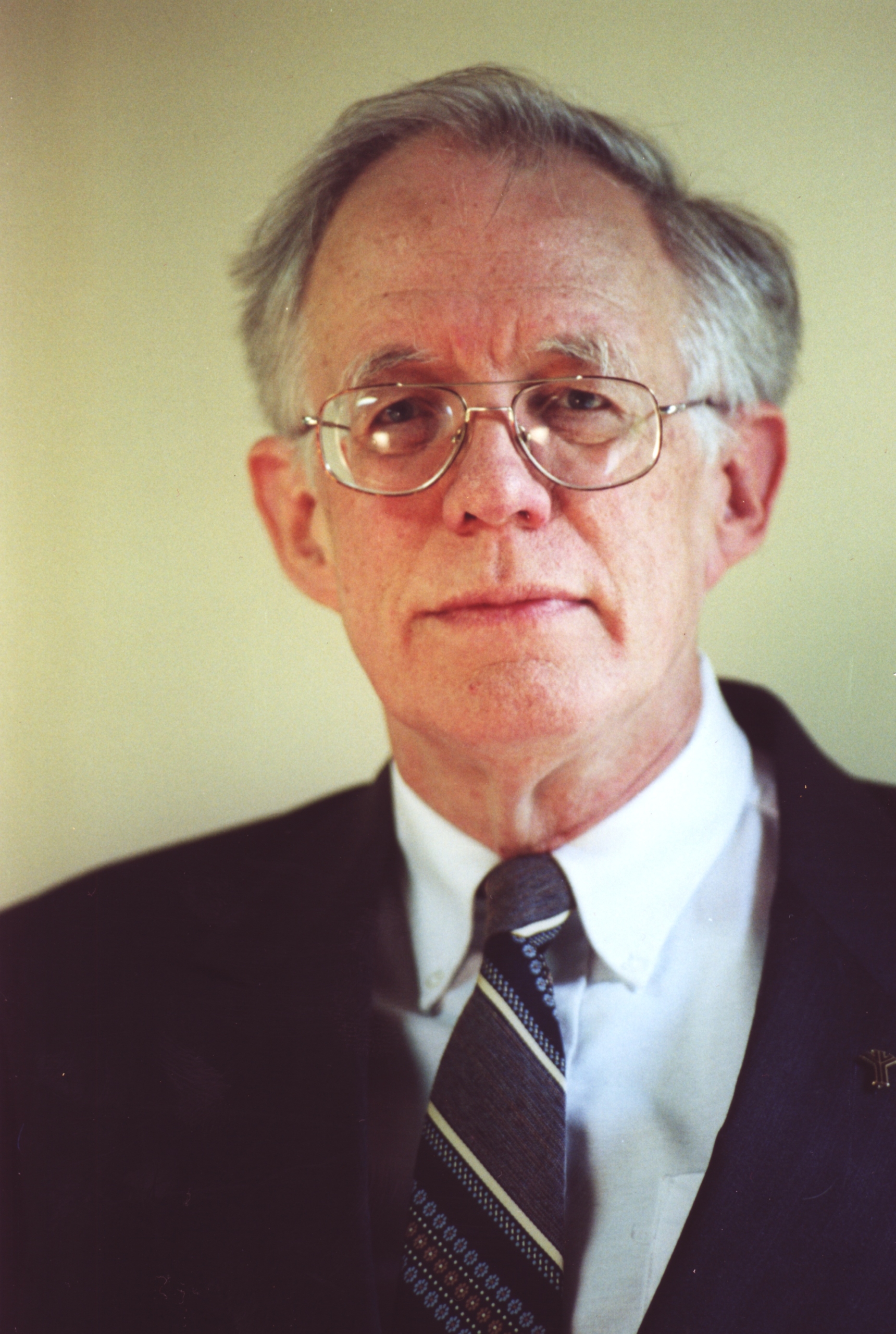
 RCP chairman Frank Furedi prepares for power with Lenin’s guidance
RCP chairman Frank Furedi prepares for power with Lenin’s guidance



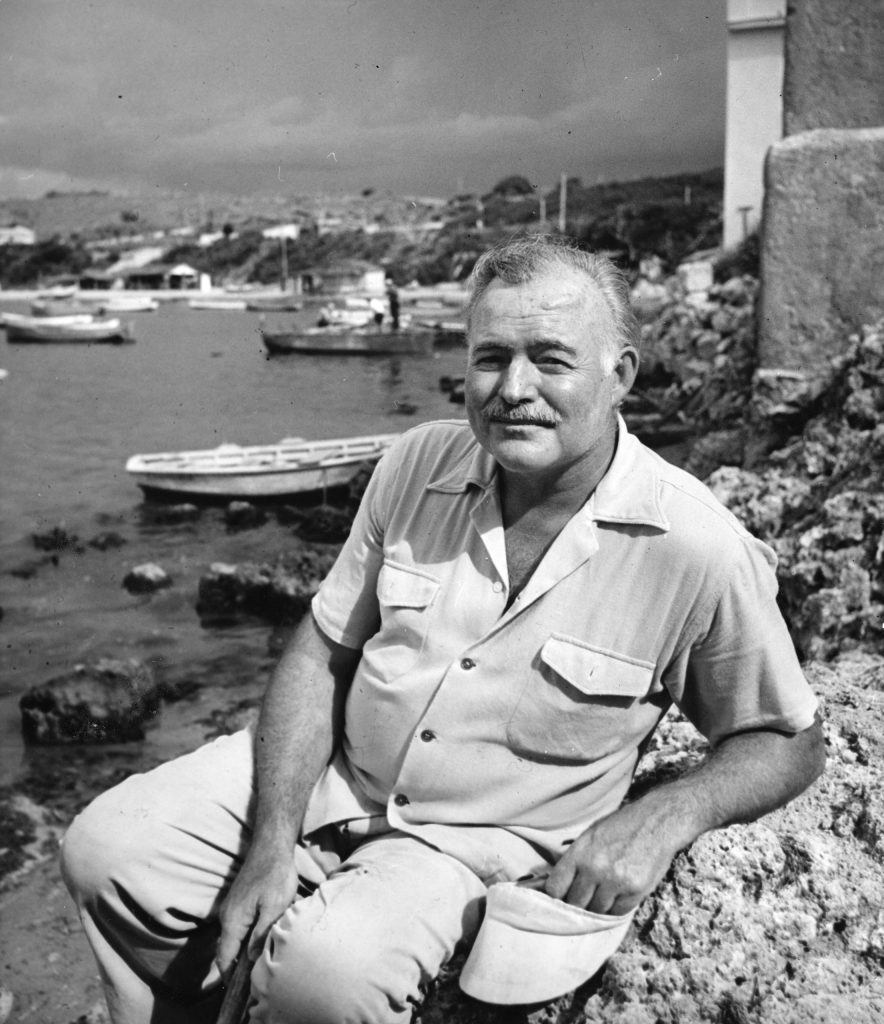
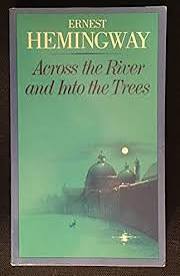 This week, I read Hemingway’s 1950 novel Across the River and into the Trees with my usual reaction: good but I wanted more. Although, I must say that re-reading the book and thinking about it for this writing, I’ve found significantly more in it to like and admire. That has helped me realize that a lot of my reservations about Hemingway come from my inability to engage him at the level he deserves.
This week, I read Hemingway’s 1950 novel Across the River and into the Trees with my usual reaction: good but I wanted more. Although, I must say that re-reading the book and thinking about it for this writing, I’ve found significantly more in it to like and admire. That has helped me realize that a lot of my reservations about Hemingway come from my inability to engage him at the level he deserves.